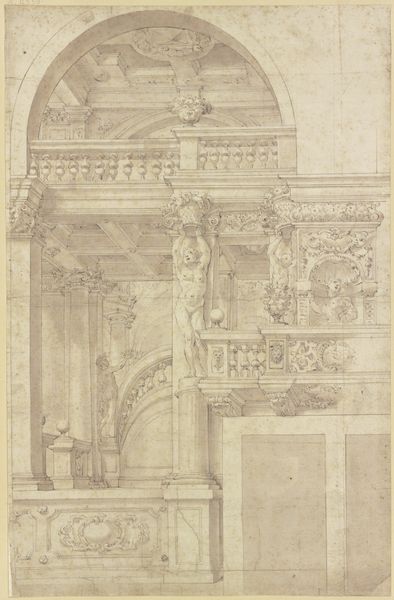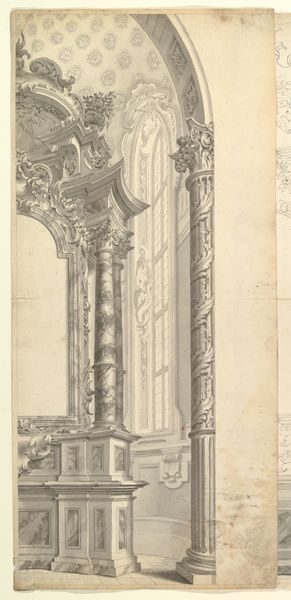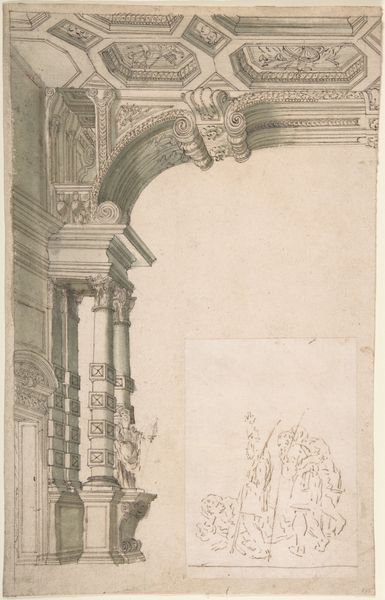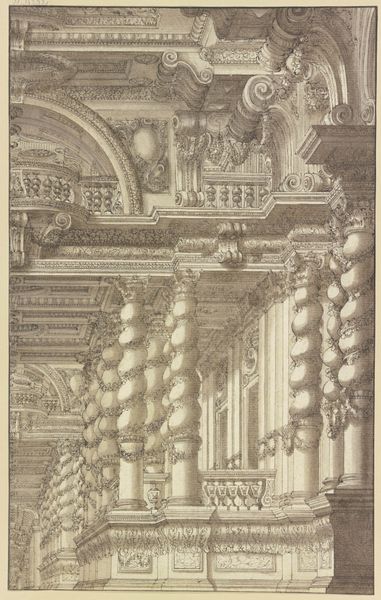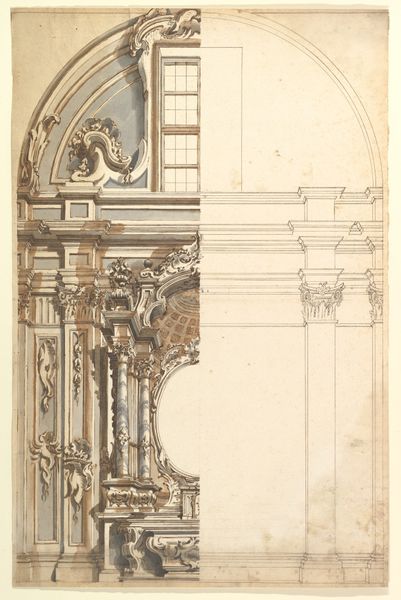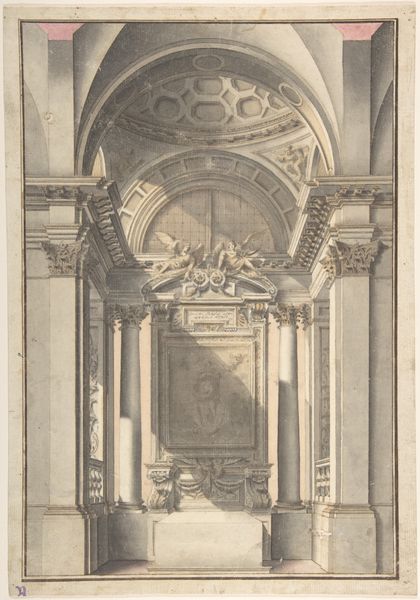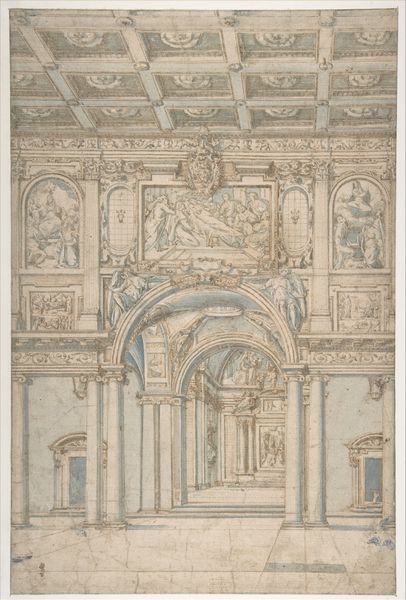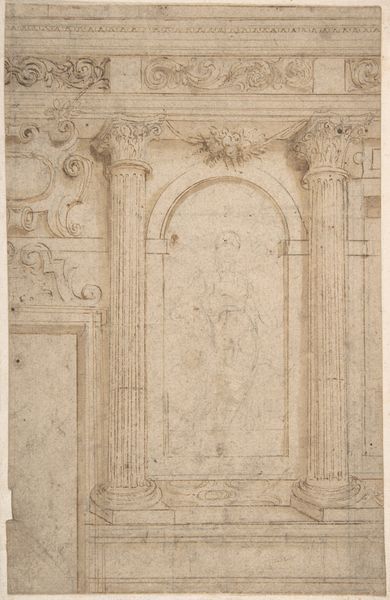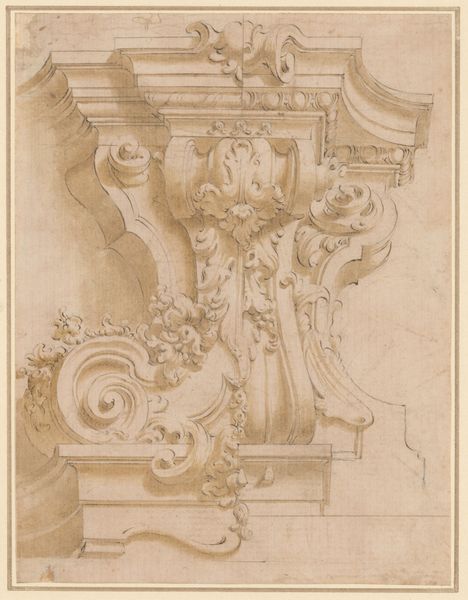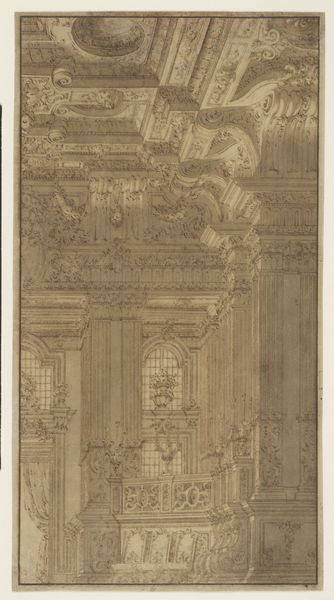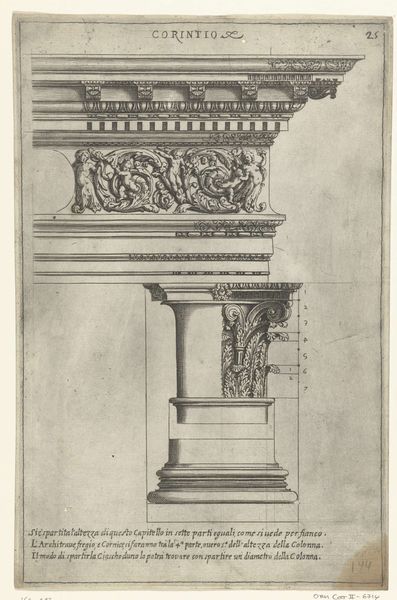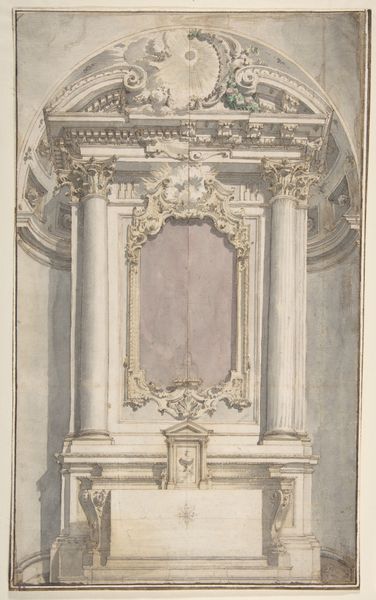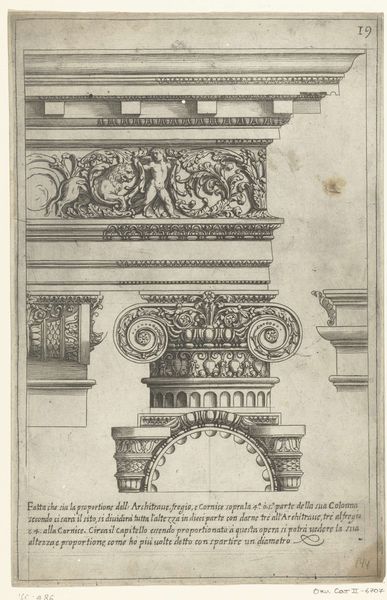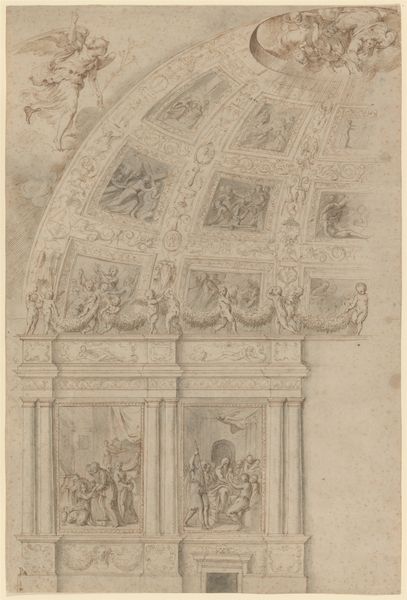
Design for a Trompe L'Oeil Ceiling with a Loggia 1775 - 1836
0:00
0:00
drawing, print, watercolor, architecture
#
drawing
#
water colours
# print
#
sculpture
#
oil painting
#
watercolor
#
geometric
#
trompe-l'oeil
#
academic-art
#
architecture
Dimensions: 11-1/4 x 7-1/4 in. (28.6 x 18.4 cm)
Copyright: Public Domain
Editor: So, this is Faustino Trebbi's "Design for a Trompe L'Oeil Ceiling with a Loggia," made sometime between 1775 and 1836, rendered in watercolor. It gives me the impression of peering up into some grand hall that isn’t really there. What are your thoughts on this deception? Curator: It's interesting to consider this trompe l'oeil not just as illusion, but as labor. Look closely at the rendering of the architectural details. The time, skill, and sheer material investment required to depict these ornate elements so convincingly point to a very specific mode of production, catering to elite tastes and reinforcing their social position through elaborate display. It begs the question: What does it mean to consume this kind of deceptive representation? Editor: I see your point. It’s not just about fooling the eye, it's about showing off the wealth and artistry required to even attempt such a thing. Does the use of watercolor as a medium also play a role in understanding its material context? Curator: Precisely! Watercolor, often associated with preparatory sketches or ‘minor’ works, is here deployed to simulate the grandeur of fresco or oil. The very act of choosing watercolor and print as a medium is very telling. Trebbi consciously rejects traditional high-art mediums in an illusionistic rendering of what? A surface, something fundamentally a medium to transmit cultural, material wealth. Editor: That's a great observation. So it becomes about transforming cheaper materials into an image of opulence, almost democratizing, yet emphasizing, its allure. Curator: Precisely. Think of the social implications of a wider audience accessing images, even deceptive ones, of aristocratic taste. What power dynamics are at play when these material illusions become part of a broader visual culture? Editor: I guess I had tunnel vision when only considering "does it look real," and not considering "why fake it and with what." Thanks for opening my eyes, Curator. Curator: Absolutely! Looking at art through the lens of materials always uncovers fascinating insights into society and production.
Comments
No comments
Be the first to comment and join the conversation on the ultimate creative platform.
